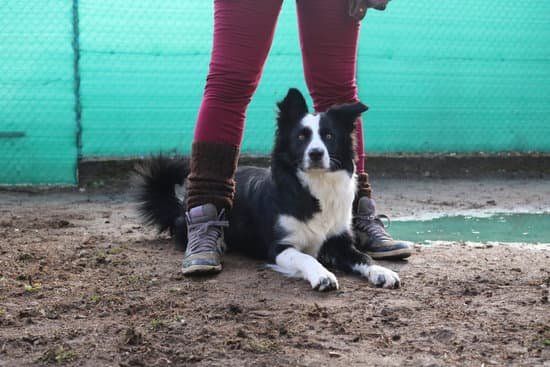Are you wondering how to train your dog to stop getting on the couch? Many pet owners struggle with this common issue, but with the right approach and consistency, it is possible to teach your furry friend to respect your furniture boundaries. Understanding why dogs are drawn to couches and learning effective training techniques can make a significant difference in maintaining a harmonious home environment.
Dogs have their reasons for wanting to jump on the couch, and it’s essential to understand their behavior before implementing any training methods. Whether it’s seeking comfort, wanting to be close to their human companions, or simply finding a cozy spot, recognizing the underlying motivations behind this behavior is the first step in addressing the issue effectively.
In this article, we will explore the negative impact of dogs on couches, discuss ways to set boundaries and establish a “no couch” rule, and delve into positive reinforcement techniques for rewarding desired behavior. By gaining insight into your dog’s behavior and providing consistent training, you can create a couch-free home environment that both you and your furry companion can enjoy.
The Negative Impact of Dogs on Couches
Having a dog that constantly gets on the couch can have several negative impacts, both for your furniture and for your overall household cleanliness. Not only do dogs shed hair and dander, but they can also track in dirt and outdoor debris onto the furniture.
This not only leads to a constant need for cleaning, but it can also cause wear and tear on the couch itself. Additionally, allowing your dog on the couch may result in territorial behavior, leading to potential conflicts if there are multiple dogs in the household.
One effective way to address this issue is by teaching your dog how to stop getting on the couch. By establishing a no-couch rule and effectively training your dog to follow it, you can eliminate these negative impacts and create a more comfortable living environment for both you and your pet. Training your dog in this manner not only benefits you as a pet owner, but it also helps ensure the well-being of your furry companion.
There are various methods you can use to train your dog to stop getting on the couch, from setting boundaries to providing alternative comfort spaces for them. Through consistent training and positive reinforcement, you can successfully teach your dog to respect the no-couch rule, ultimately preventing any negative impact on your furniture and maintaining a harmonious household.
| Negative Impacts | Training Methods |
|---|---|
| Shed hair and dander | Positive reinforcement |
| Dirt tracking | Setting boundaries |
| Territorial behavior | Creating alternative comfort spaces |
Setting Boundaries
Dogs are naturally inclined to seek comfort, and often view couches as a cozy spot to relax. However, allowing your dog to get on the couch can lead to issues such as shedding, drooling, and potential damage. To establish a no-couch rule, it’s essential to set clear boundaries for your pet.
The first step in setting boundaries is to be consistent with your commands and expectations. When your dog tries to get on the couch, firmly say “no” and gently guide them off the furniture. It’s important to use a firm but gentle tone of voice to communicate that getting on the couch is not acceptable behavior. Consistency is key in helping your dog understand and abide by the no-couch rule.
In addition to verbal commands, using physical barriers such as baby gates or pet barriers can help reinforce the no-couch rule. This helps prevent your dog from accessing the couch when you’re not around to enforce the rule.
Creating a designated area with their bed or blanket can also provide a comfortable alternative space for them to rest. With time and patience, your dog will learn that they have their own special spot where they can feel comfortable without getting on the couch.
| Key Points | Action Steps |
|---|---|
| Consistency | Firmly say “no” and guide them off the furniture |
| Physical barriers | Use baby gates or pet barriers to prevent access |
| Designated area | Create a special spot with bed or blanket as an alternative comfort space |
Positive Reinforcement
When it comes to training your dog to stop getting on the couch, positive reinforcement is an effective and humane method to encourage desired behavior. Using positive reinforcement involves rewarding your dog for choosing to stay off the couch, rather than punishing them for getting on it. This approach not only helps in training your dog but also strengthens the bond between you and your furry friend.
Here are some effective methods of positive reinforcement to train your dog to stop getting on the couch:
- Use treats: Whenever your dog chooses to stay off the couch, reward them with a tasty treat. Over time, they will associate staying off the couch with receiving a reward.
- Offer praise: Dogs respond well to verbal praise and affection. When you catch your dog staying off the couch, shower them with praise and petting as a form of reward.
- Provide toys: Introduce interactive toys or a comfortable bed as an alternative for your dog to enjoy instead of the couch. Encourage them to use these items by praising and rewarding them when they do.
By consistently rewarding your dog for staying off the couch, you are reinforcing this desired behavior and teaching them that there are more enjoyable alternatives available.
Remember that patience and consistency are key when using positive reinforcement. It may take some time for your dog to fully understand and comply with the no-couch rule, so be sure to remain consistent in applying this training method.
In addition, it’s important to keep in mind that every dog is unique, and what works for one may not work for another. Be observant of your pet’s individual preferences and adjust your training methods accordingly. With dedication and the right approach, you can successfully train your dog to stop getting on the couch while strengthening your bond with them.
Creating an Alternative Comfort Space for Your Dog
Dogs love to be comfortable just like humans do. They seek out soft and cozy spots for themselves, which often leads them to the couch. Instead of getting frustrated with your dog for wanting to relax in comfort, consider creating an alternative space that is equally appealing. Here are some tips on how to create a designated comfort zone for your dog:
- Invest in a comfortable dog bed: Choose a dog bed that is soft, supportive, and appropriately sized for your pet. Place it in a quiet and cozy corner of your home where your dog can feel safe and secure.
- Provide blankets and toys: Make the designated comfort space even more inviting by adding some blankets or pillows for extra coziness. You can also include your dog’s favorite toys or chew bones to keep them entertained.
- Make it scent-friendly: Dogs have a strong sense of smell, so you can make the area more appealing by adding some of their favorite scents, such as lavender or chamomile, which are known to have calming effects on dogs.
By providing an attractive alternative to the couch, you are offering your dog a comfortable and inviting space that they will be drawn to. This will help redirect their attention from the couch while still allowing them to enjoy a cozy spot of their own.
Remember, consistency is key when training your dog to stay off the couch. With patience and positive reinforcement, you can teach your furry friend to respect the no couch rule while creating a peaceful and harmonious living environment for everyone in the household.
Consistency Is Key
When it comes to training your dog to stop getting on the couch, consistency is key. Dogs thrive on routine and clear boundaries, so it’s important to enforce the no couch rule consistently and persistently. Here are some strategies for successfully implementing and enforcing this rule in your home.
Establish Clear Communication
One of the most important aspects of enforcing the no couch rule is establishing clear communication with your dog. Use verbal commands such as “off” or “down” whenever you see your dog attempting to get on the couch. Be firm and consistent with these commands, and make sure that all family members are using the same language and signals to reinforce the rule.
Use Positive Reinforcement
In addition to verbal commands, positive reinforcement can be a powerful tool for enforcing the no couch rule. Whenever your dog obeys the command to get off the couch, be sure to reward them with praise, treats, or their favorite toy. This will help them understand that staying off the couch leads to positive outcomes, making them more likely to comply with the rule in the future.
Implement Consequences
It’s also important to implement consequences when your dog continues to defy the no couch rule. This could involve a sharp “no” command, removing them from the room where the couch is located, or temporarily restricting their access to other areas of the house. Consistently enforcing these consequences will help your dog understand that getting on the couch is not acceptable behavior.
By implementing these strategies with patience and consistency, you can effectively enforce the no couch rule in your home and enjoy a comfortable, clean living space free from pet hair and scratches.
Addressing Any Underlying Behavioral Issues
Dogs can sometimes get on the couch due to underlying behavioral issues that need to be addressed in order to effectively train them to stop this behavior. It’s important for dog owners to recognize and understand these underlying issues in order to successfully train their dogs. Addressing these issues can help create a more harmonious relationship between you and your pet, leading to a couch-free home.
Understanding Your Dog’s Behavior
Before tackling the issue of your dog getting on the couch, it is important to understand why they are doing it in the first place. Dogs may seek out the comfort of the couch due to separation anxiety, lack of proper exercise, seeking warmth, or even just trying to be closer to their owner. Identifying the root cause of this behavior is crucial in addressing and correcting it.
Training Techniques for Underlying Issues
Once you have identified the underlying behavioral issues causing your dog to get on the couch, it’s important to tailor your training techniques accordingly. For example, if your dog is seeking warmth on the couch, providing them with a comfortable bed or blanket near a warm spot in the house can help redirect their behavior. If separation anxiety is the issue, gradually desensitizing them to being alone through positive reinforcement and crate training may be necessary.
Consistency in Training
Regardless of the underlying behavioral issue at play, consistency is key when training your dog to stop getting on the couch. Consistently enforcing boundaries and rewarding desired behaviors will help your dog understand what is expected of them. This will require patience and diligence on your part as a pet owner, but over time, your efforts will pay off as you enjoy a couch-free home with a well-trained dog.
By addressing any underlying behavioral issues in addition to setting clear boundaries and using positive reinforcement techniques, you can effectively train your dog to stop getting on the couch. Remember that patience and consistency are essential in this training process. And if you find yourself struggling with any aspects of this process, seeking professional help from a certified dog trainer or animal behaviorist might be beneficial for both you and your furry friend.
Seeking Professional Help
While many dog owners may find success in training their dogs to stop getting on the couch on their own, there are instances where professional help may be necessary. If you have tried various methods and have not seen any improvement in your dog’s behavior, it may be time to seek the expertise of a professional dog trainer or animal behaviorist.
Professional trainers and behaviorists have an in-depth understanding of canine behavior and can provide personalized guidance based on your dog’s specific needs. They can assess the underlying reasons for your dog’s desire to get on the couch and develop a tailored training plan to address these issues effectively. Additionally, they can offer valuable insights into behavior modification techniques that you may not have been aware of, further increasing the likelihood of success in training your dog.
In some cases, seeking professional help is also beneficial when dealing with complex behavioral issues that may be contributing to your dog’s couch-seeking behavior. These professionals can identify any underlying anxieties or fears that your dog may be experiencing, which could be driving them to seek comfort on the couch.
Through their expertise, they can help you address these issues through targeted training methods and create a more comfortable environment for your pet. So if you’ve been struggling with how to train your dog to stop getting on the couch, seeking professional help could be the key to achieving lasting results.
Conclusion
In conclusion, training your dog to stop getting on the couch is possible with the right approach and consistent effort. By understanding the behavior and its negative impact on your furniture, you can begin to set boundaries and establish a no couch rule in your home.
Positive reinforcement, such as rewarding your dog for staying off the couch, can greatly aid in achieving the desired behavior. Creating an alternative comfort space for your dog, such as a cozy bed or designated area, can also help in redirecting their attention away from the couch.
Consistency is key when enforcing the no couch rule. It’s important to continue reinforcing the boundary and not give in to any attempts by your dog to get on the couch. Additionally, addressing any underlying behavioral issues that may be contributing to this behavior is crucial for long-term success. Seeking professional help from a certified dog trainer or behaviorist may be necessary if training alone isn’t yielding the desired results.
With patience and perseverance, you can enjoy a couch-free home with your well-trained dog. Remember that every dog is different, so it may take time to see progress. But by following these tips and putting in the effort, you can create a happy and harmonious living environment for both you and your furry companion.
Frequently Asked Questions
How Do I Train a Dog Not to Get on the Couch?
Training a dog not to get on the couch requires consistency and positive reinforcement. Start by teaching the “off” command and redirecting your dog’s attention to a designated spot. Reward them for staying off the couch.
How Do I Stop My Dog From Climbing on the Couch?
To prevent your dog from climbing on the couch, establish clear boundaries and use deterrents like double-sided tape or aluminum foil on the cushions. Provide alternative comfortable spots for your dog to rest.
How Do I Stop My Dog From Using the Couch?
If your dog is using the couch as a bathroom, it’s important to address any underlying behavioral or medical issues. Clean any accidents thoroughly with an enzymatic cleaner, supervise your dog closely, and consider crate training or consulting a professional trainer for guidance.

Welcome to the blog! I am a professional dog trainer and have been working with dogs for many years. In this blog, I will be discussing various topics related to dog training, including tips, tricks, and advice. I hope you find this information helpful and informative. Thanks for reading!





